Jodh-pur, Jai-pur, Udai-pur, Rajput rulers usually named the cities they founded after themselves suf-fixed by ‘pur’ which means settlement, our guide Shailendra tells us, yet Bikaner does not follow this formula. Bikaner was named for Rao Bika a young prince of the Rathore clan, rulers of Jodhpur, who set out to found his own kingdom in the desert and for the Nara or Ner tribals, the original inhabitants of these lands.
Bikaner is different, says Shailendra with a smile, and we are about to find out, happily, that he is right.
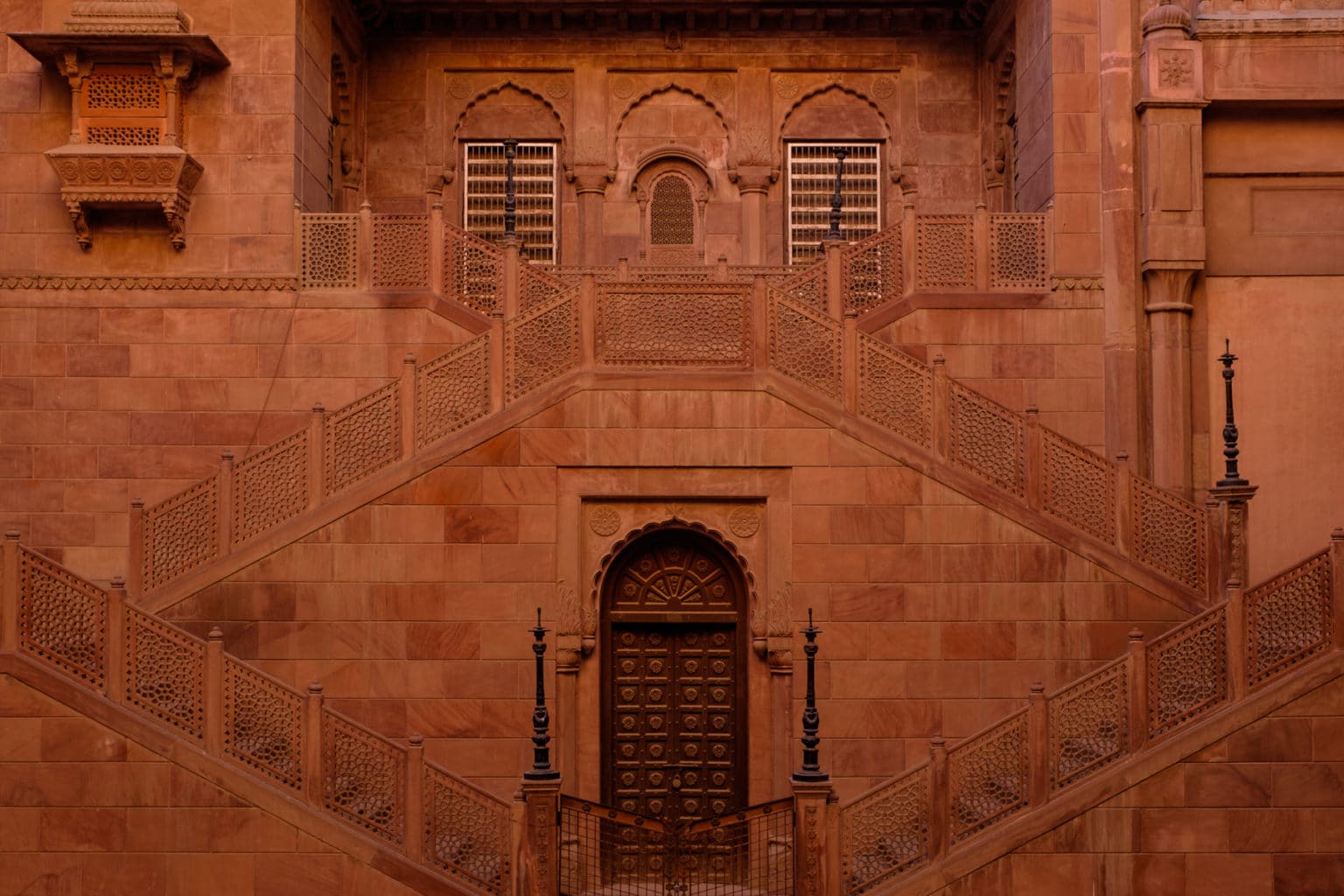
We are standing in the entry courtyard of Bikaner’s Junagadh Fort, and after a month of plenty of forts and palaces in Rajasthan, including the magnificent City Palace at Udaipur, sprawling Chittorghad, and the majestic Mehrangarh fort, we were wondering if this slightly diminutive fort palace would measure up to its more illustrious cousins. Sensing our doubt, Shailendra leads us in with a grin that seems to say, ‘wait for it!’
Sitting outside the old city, Junagarh is not a hill fort, a significant departure from most of the others in the state. However, surrounded by a large deep moat, the fort was never captured and remained the seat of Bikaner’s rulers all the way till Ganga Singh acceded to join the Indian union.
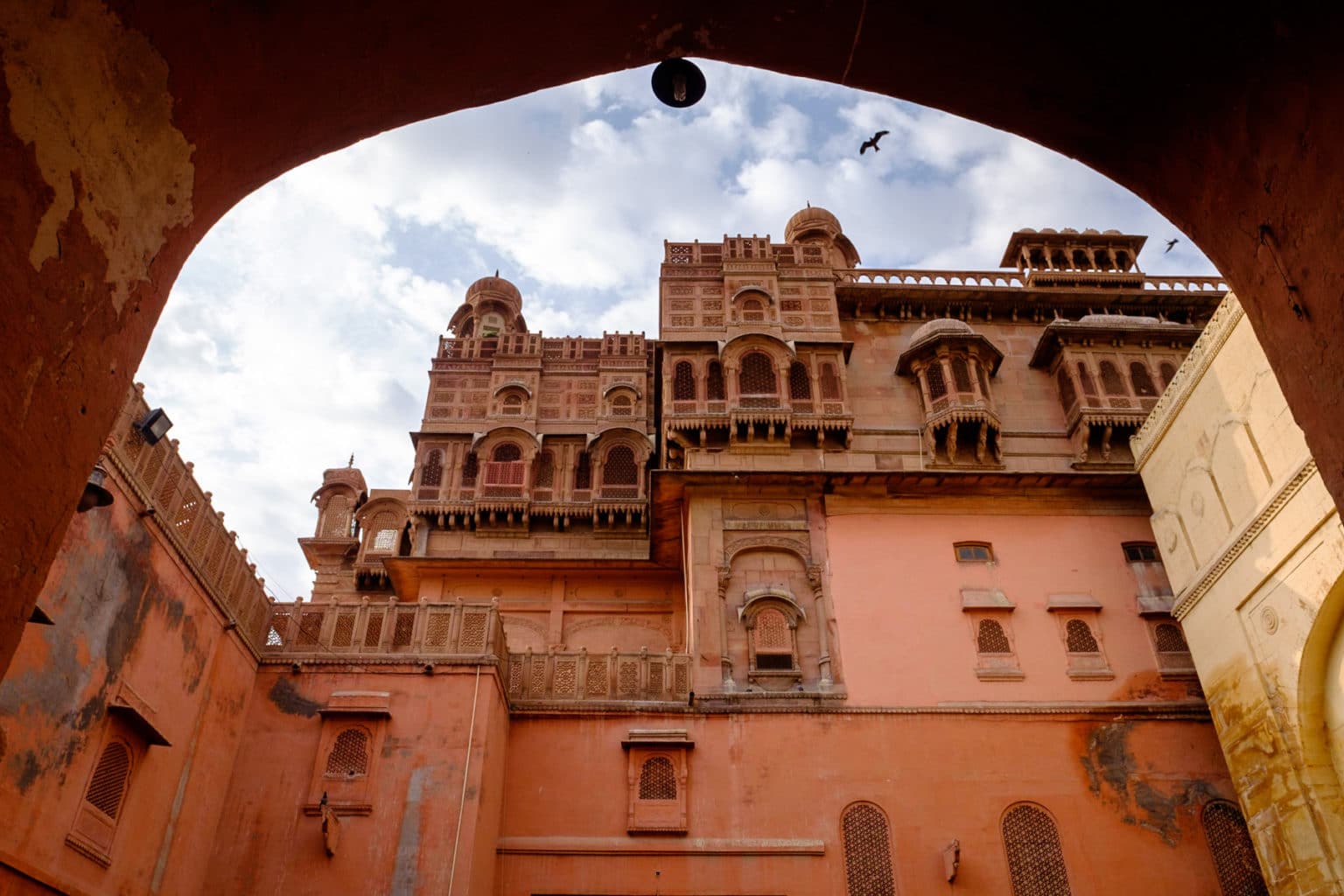
What Junagarh lacks in scale and grandeur however, it makes up in sheer charm. Built with that special red sandstone that lends Bikaner its moniker of the Red City, the fort glows warmly in the evening sun and Shailendra, who seems to know the Fort like the back of his hand, leads us through its palaces and courtyards, slowly unravelling its allure.
We are late and the fort will close soon, but this it seems, is a blessing in disguise. The tourists have left and the guards are closing up, but a quick word and a smile from Shailendra ensure that the rooms magically reopen, and we have a wonderful private viewing of the home of the Bikaner’s royals. From the Amar Mahal with delicate gold leaf paintings to the Badal Mahal, adorned with lovely blue frescos depicting rain clouds, and the Gaj Mandir with some of the most intricate and beautiful stained glass work we have seen anywhere in India, each room of the palace is a revelation. As if this was not enough, the palace also houses a small museum which hosts an actual World War I plane gifted to Maharaja Ganga Singh for his services in the war.
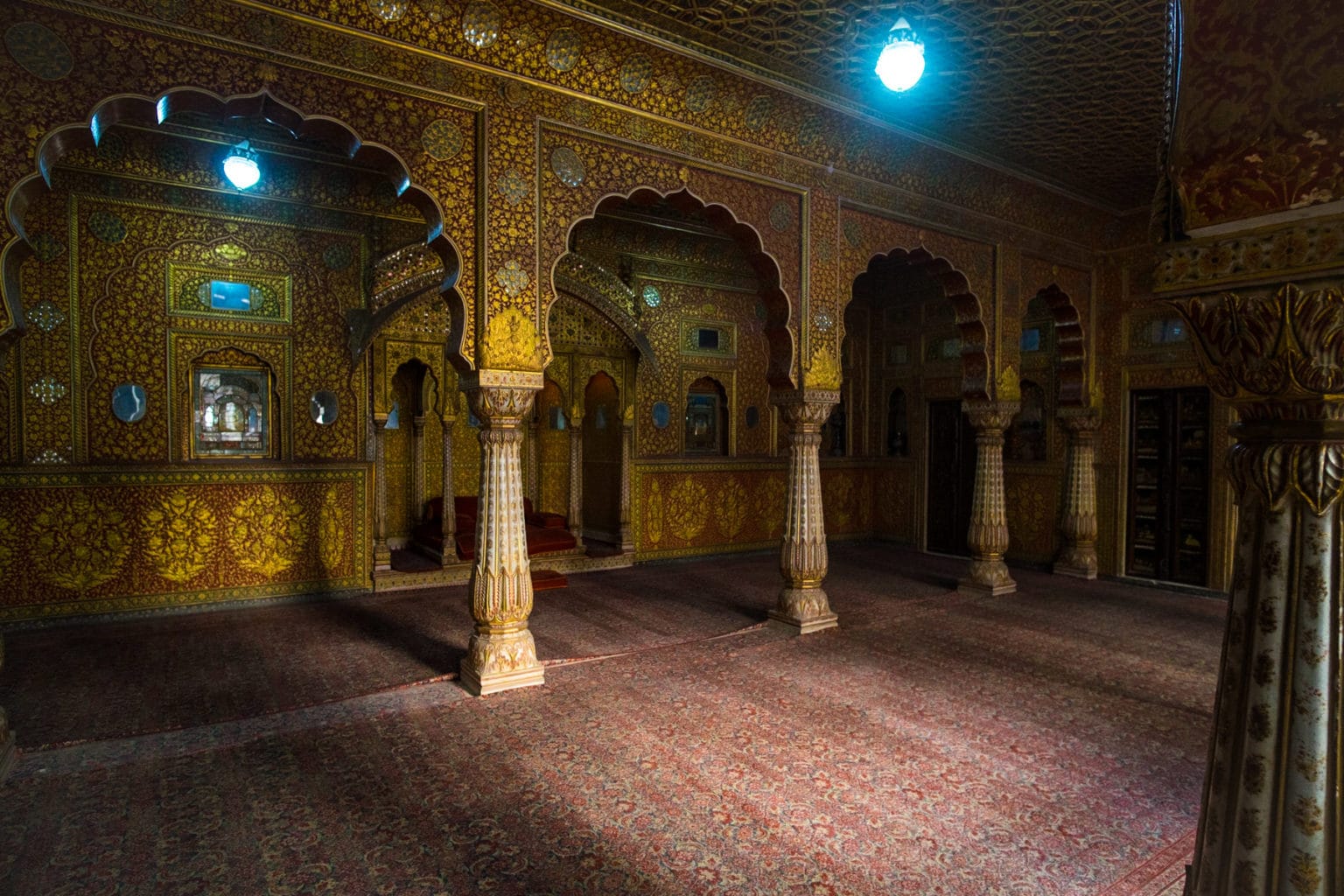
We stare at each other with eyes wide open as we wander the palace wondering, ‘why don’t more tourist come here?’ How has Bikaner escaped popular imagination for so long? Without being over the top opulent, a rather common trait in the palaces of this state, there was an elegance to each space, carefully thought through and well maintained. We had just been roaming Junaghad for an hour, but it was already amongst our favourite palaces in Rajasthan.
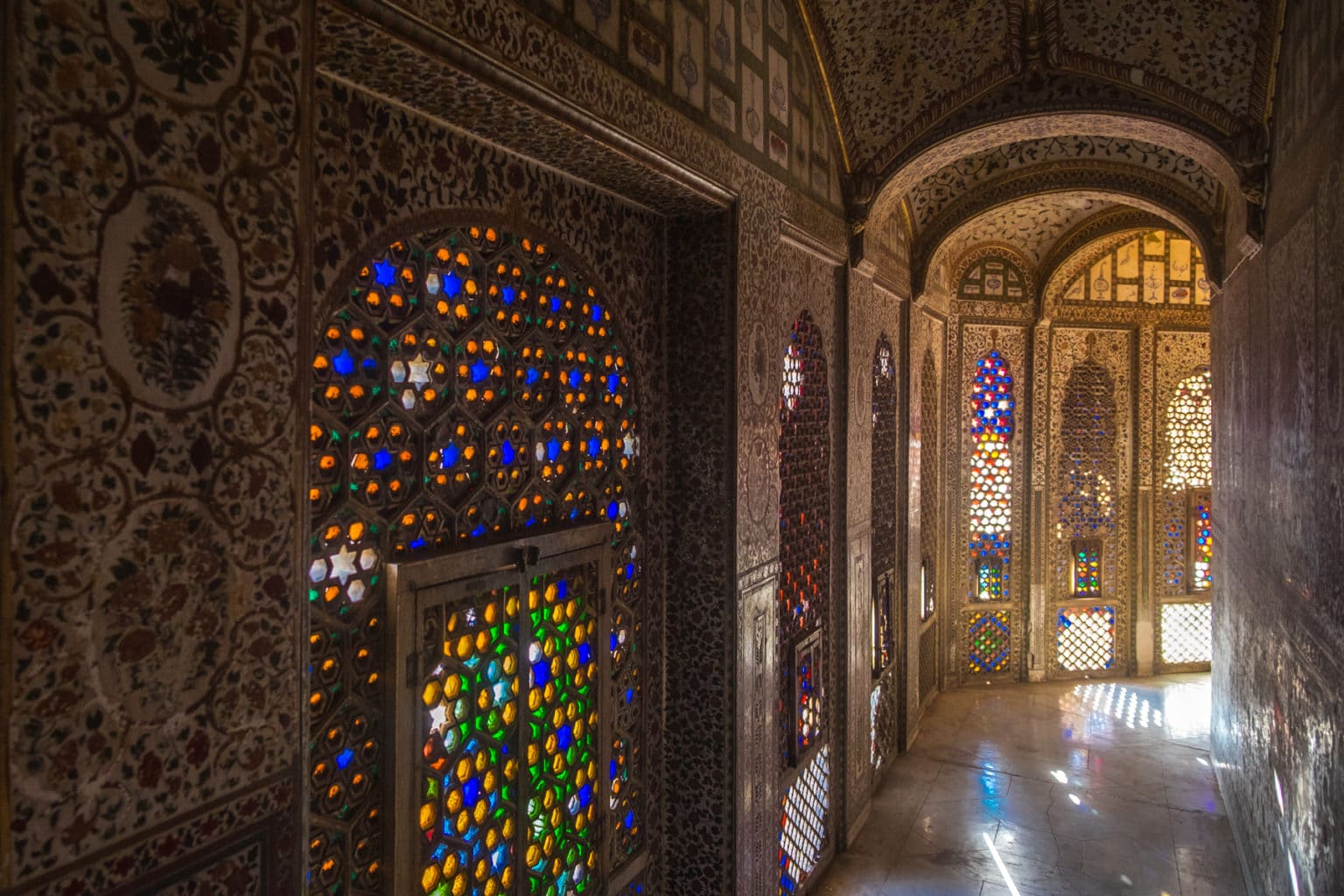
The next morning, we set off to explore Bikaner’s old city and what is probably its crowning glory, the stunning havelis. Bikaner’s location, along the silk route, was perhaps one of the reasons that Rao Bika decided to set up his empire in this arid region of the Thar and encouraged by incentives from the rulers, a number of traders settled in Bikaner. As business flourished, these traders, eager to showcase their growing clout and prestige, built large, ornate homes for themselves, called havelis, many larger than the palaces of minor kings. We have always had a love for old homes and havelis and whenever we stay in a home that we love, we lament that our respective families never had a charming old ancestral haveli sitting in a village somewhere. It’s fair to say that in our four years of travelling India we have seen some stunning homes, grand, charming and full of character, but few would compare to the havelis of Bikaner.
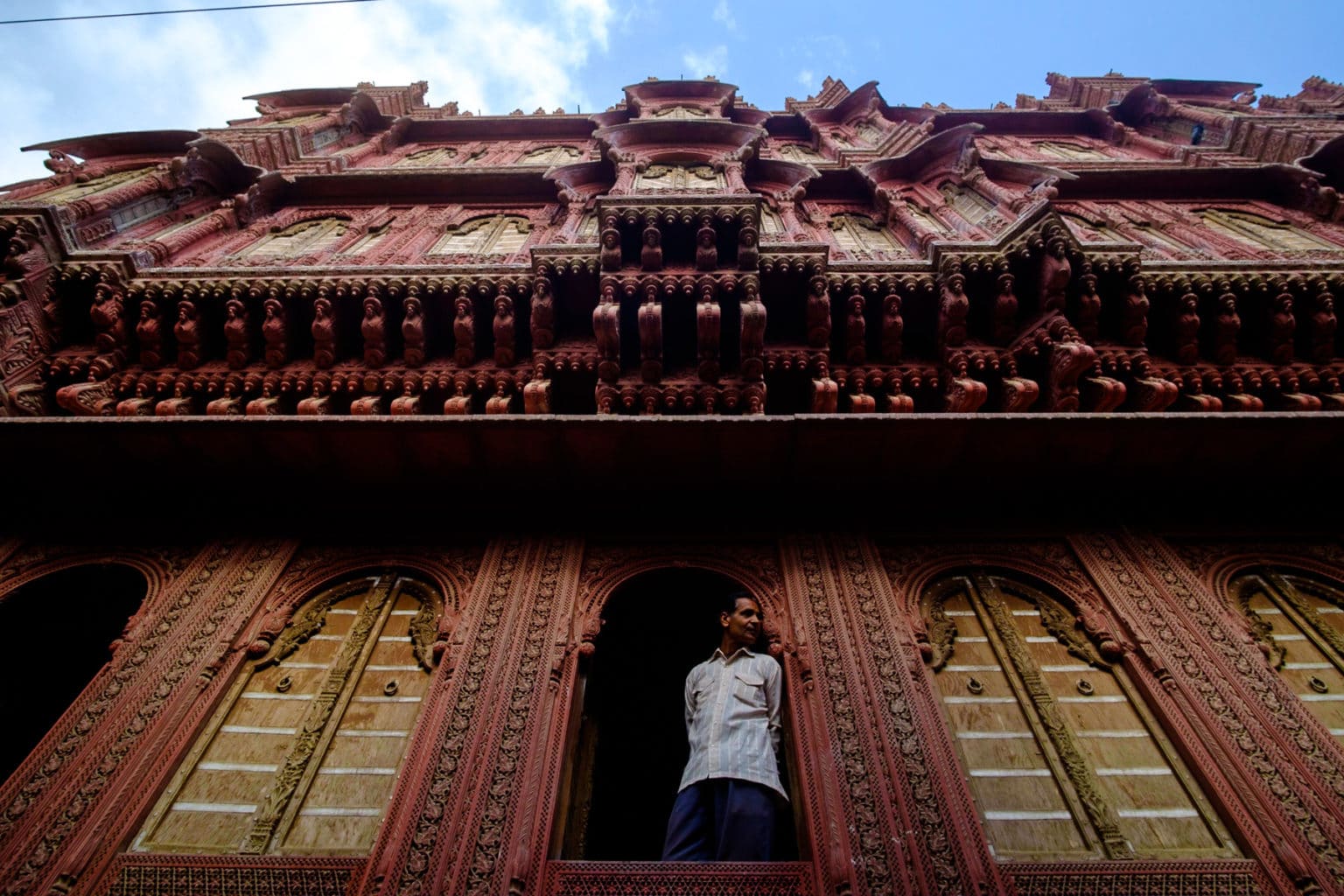
Built in the same beautiful red stone that characterises Bikaner and ornately carved, the havelis literally crowd the narrow lanes of Bikaner’s old town. It is estimated that there were once over a thousand havelis, large and small that lined these streets, but with neglect and lack of upkeep, fewer than half that number survive. The most famous of these and the first ones we see are the Rampuria havelis. A set of seven havelis, built by three brothers of the Rampuria family, the first sight of these structures took our breath away. Stretching from one end of the road to the other the havelis are an amalgamation of traditional Rajasthani and European styles and feature beautiful Jharokas, floral design elements and even motifs of British royalty. All along the length of the building are windows which not only serve to keep the houses cool in the scorching desert summers, but also indicate the wealth of the occupant.
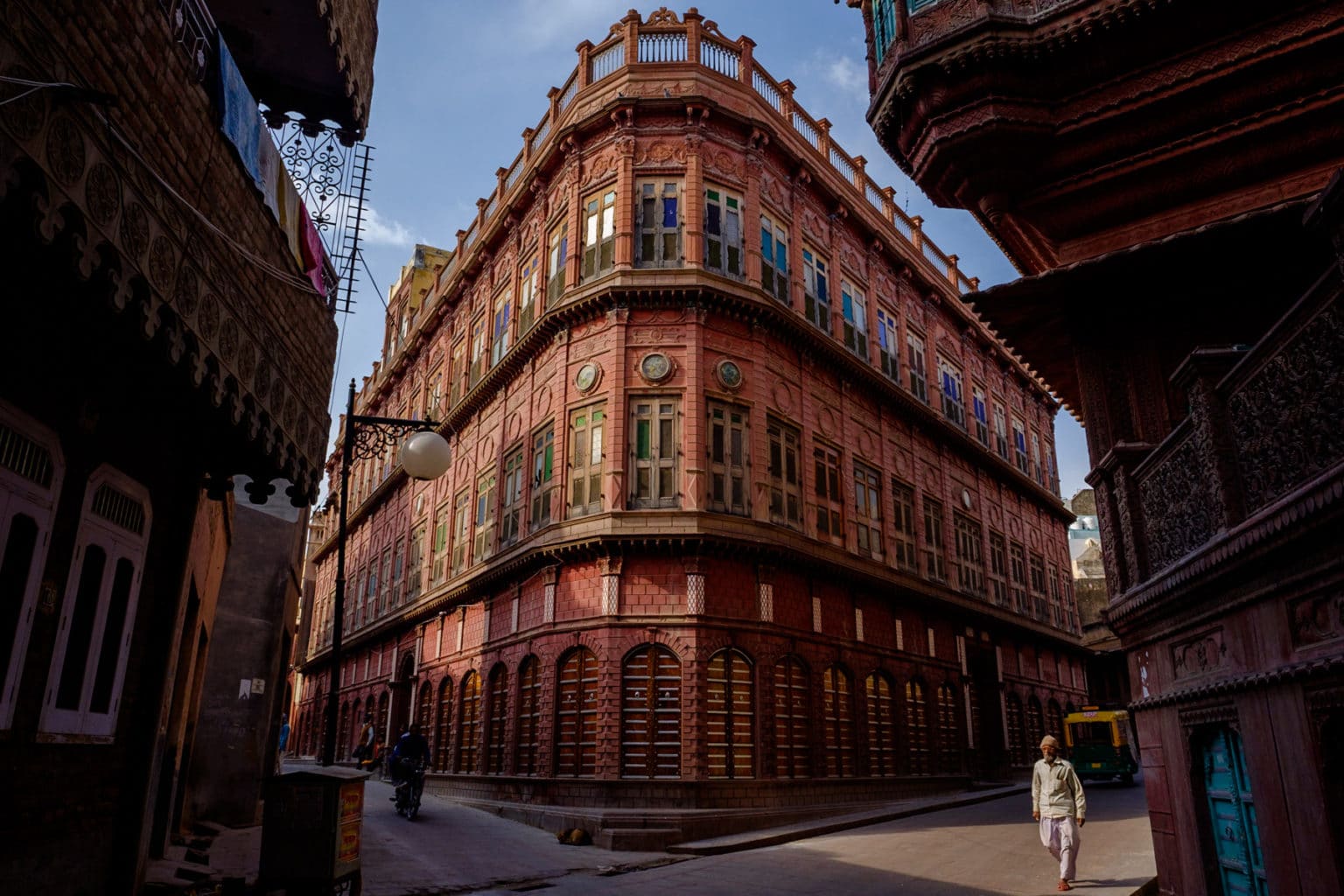
We spent the next few hours wandering the bylanes of the old town with Shailendra who took us haveli hopping, pointing out unique elements like the separate doors for men and women, the carved wooden ceilings, which help keep the house cool, occasional frescos of gods and goddesses and inlaid ivory designs in the massive wooden doors on the more elaborate mansions. Whilst we couldn’t help but stare in awe at these marvels of human ingenuity, it was tinged by a sense of sadness; most of the homes lay locked and abandoned, many in need of urgent restoration, with families migrating to places like Kolkatta and Mumbai as the silk route fell out of prominence and trade moved to other centres.
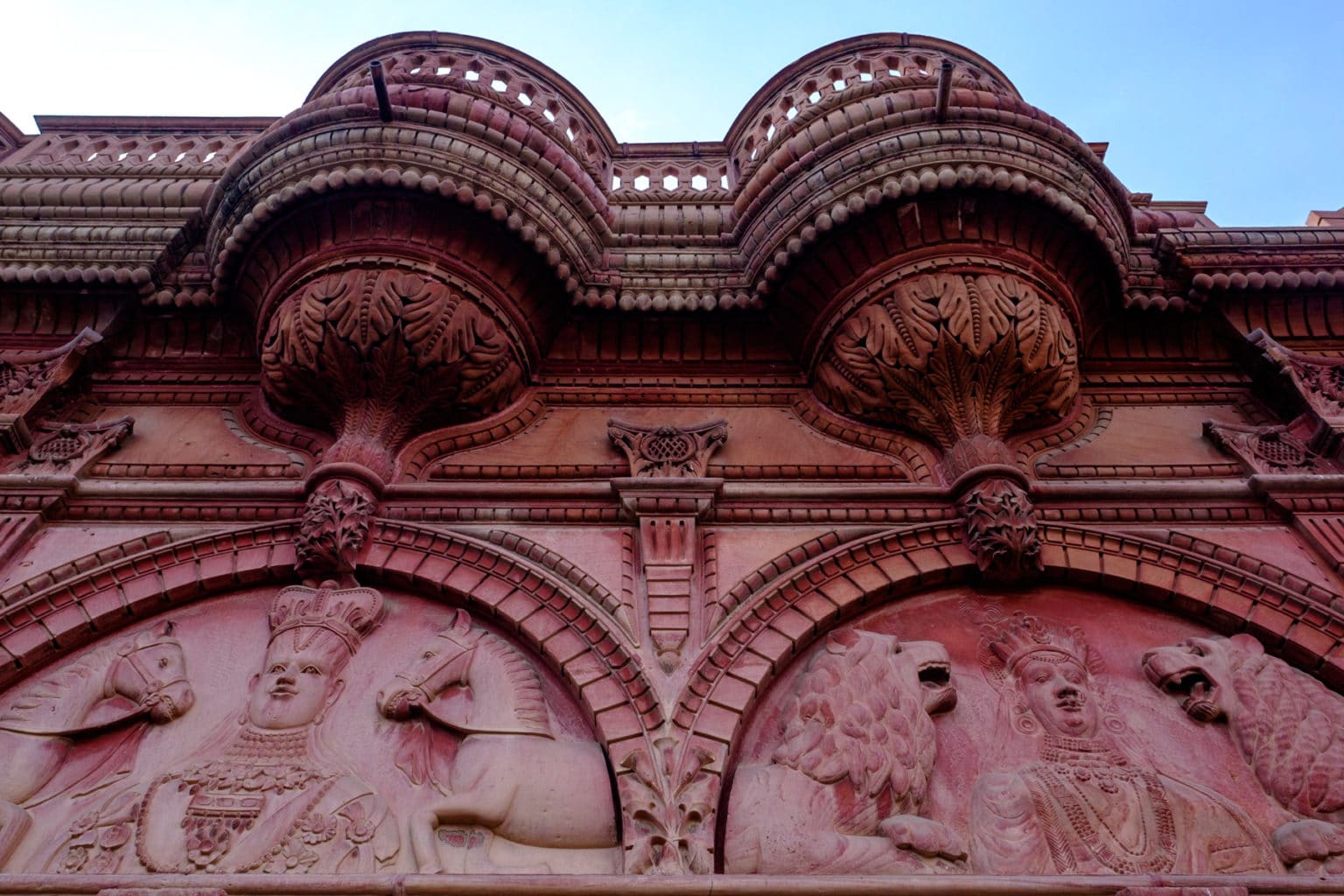
A walk around the havelis and markets of the old left us famished which meant that it was time to check out Bikaner’s other ‘wonder’ its world-famous namkeen! We had seen plenty of shops along the way and ask if the famous Bikanerwala chain which we have seen around other cities, is available here. Shailendra scoffs! Nobody eats that here, he exclaims, after all, ‘woh sab bahar ke liye hai, yaha ka hawa-paani alag hai, aur namkeen ka swad bhi!’ Our morning ends with Shailendra treating us to mountains of namkeen of all shapes, sizes and flavour, washed down with copious amounts of chai, from a hole in the wall joint hidden away in the old city and whilst neither of us consider ourselves fans of namkeen, we end up by buying loads to take back home with us. A sales job well done.
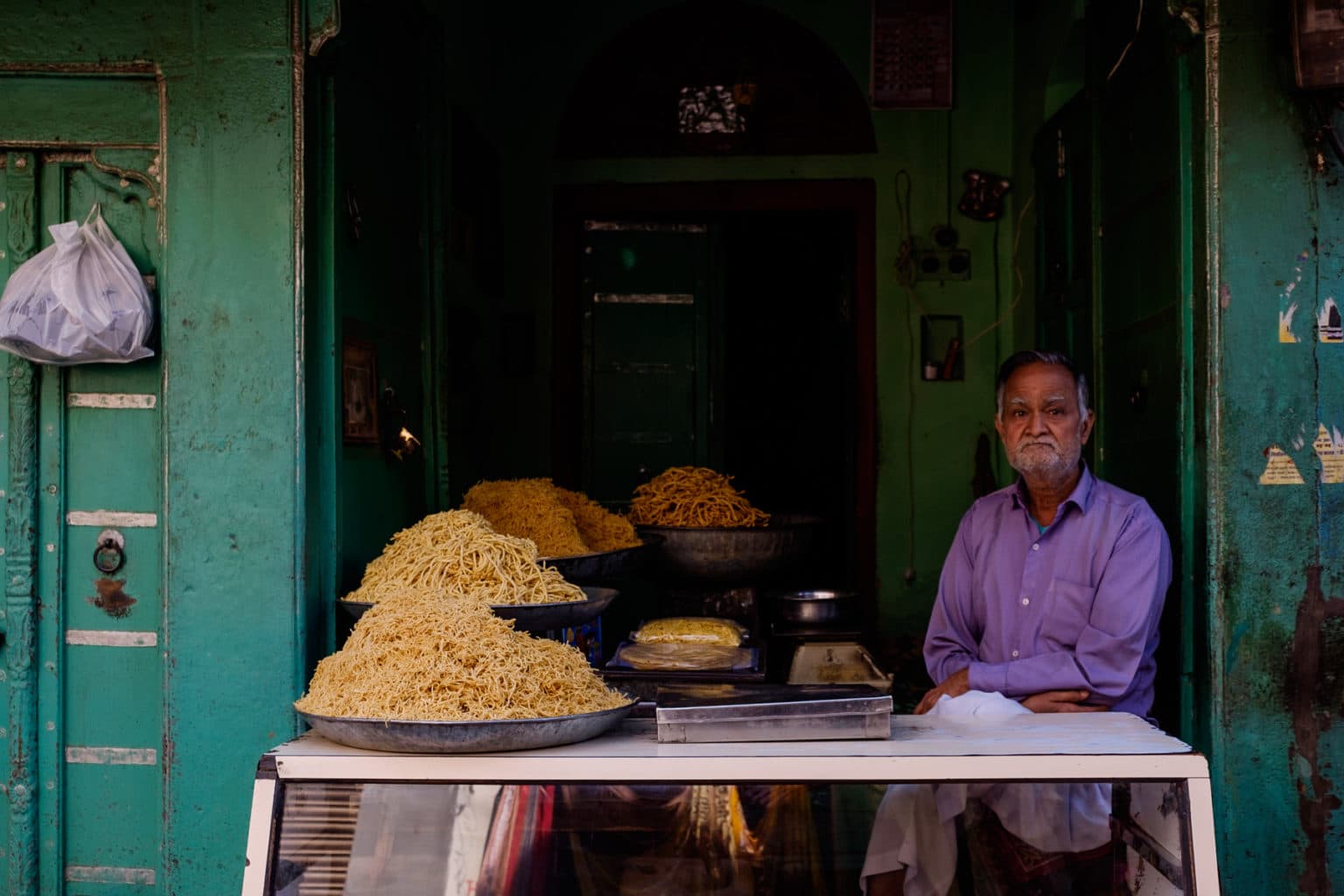
As we sit in an auto, stuck at a railway crossing, curiously located, smack bang in the middle of the city, my mind wanders over the last couple of days in Bikaner. What strikes me through our two days in Bikaner is the relative lack of tourist traffic, despite this large town offering some of the most interesting sights we had seen so far in Rajasthan and I ask Shailendra about this. He sighs as he answers, ‘not too many people come here, my guests are mainly French, very few Indians visit Bikaner. For most travellers, it is all about Jodhpur, Jaipur and Jaisalmer’. He seems lost in thought for a second before adding, here everybody is friendly, but nobody will hassle you to buy trinkets or eat at their restaurant, which is why the character of Bikaner has remained intact through all these years. Perhaps it is better this way.
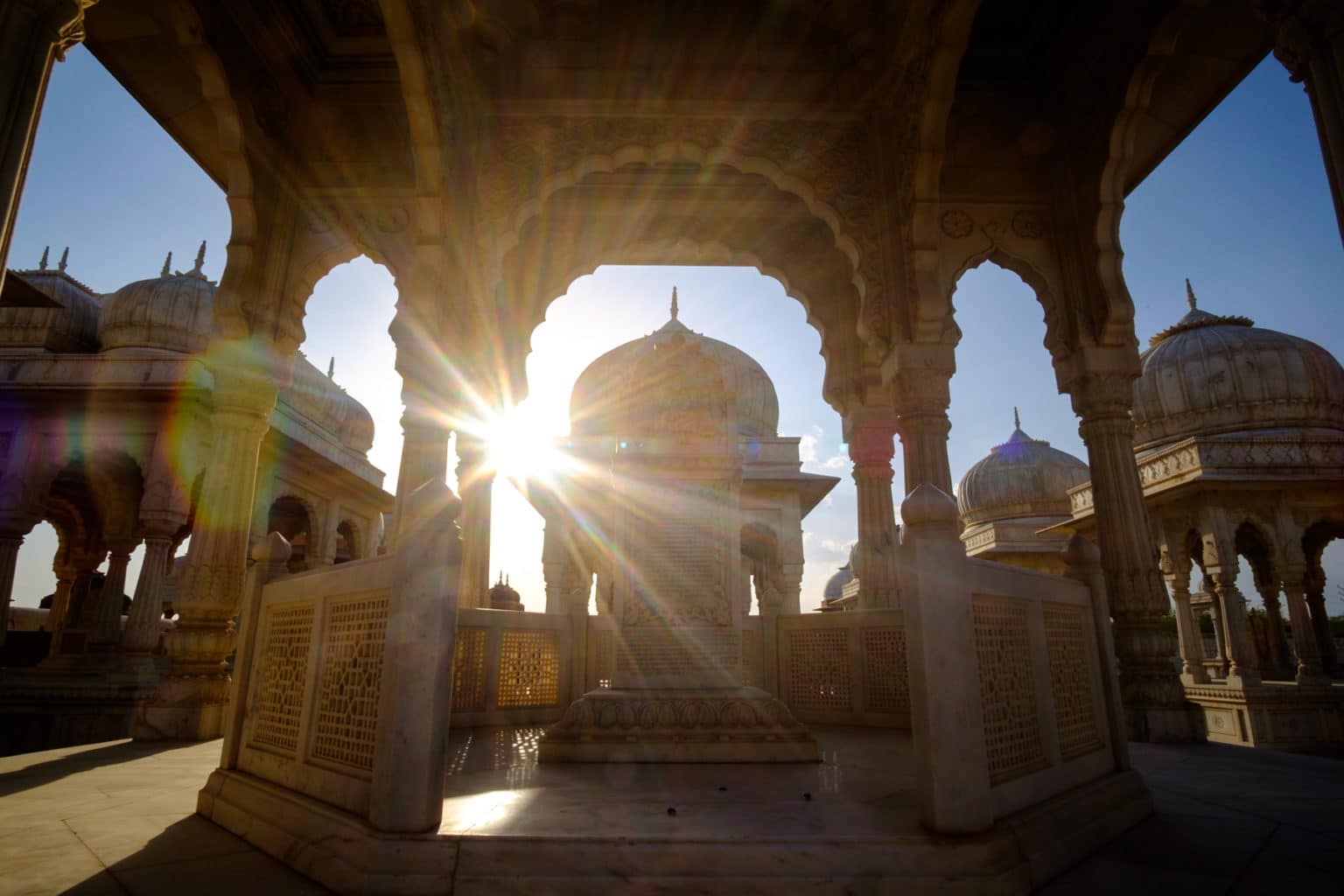
The palace, fort and town might not be as popular as the more famed cities of this well-trodden state but it takes hold and has magic that we haven’t felt yet. We head back to our hotel, the fabulously restored Narendra Bhavan that exudes Rajasthani hospitality without being overbearing, to contemplate our next move, head further east to frescos of Shekhawati or down south to chill for a few days by the banks of the Pushkar lake.
A version of this story first appeared in Firstpost as part of the #FTravellers series on reDiscovering Rajasthan